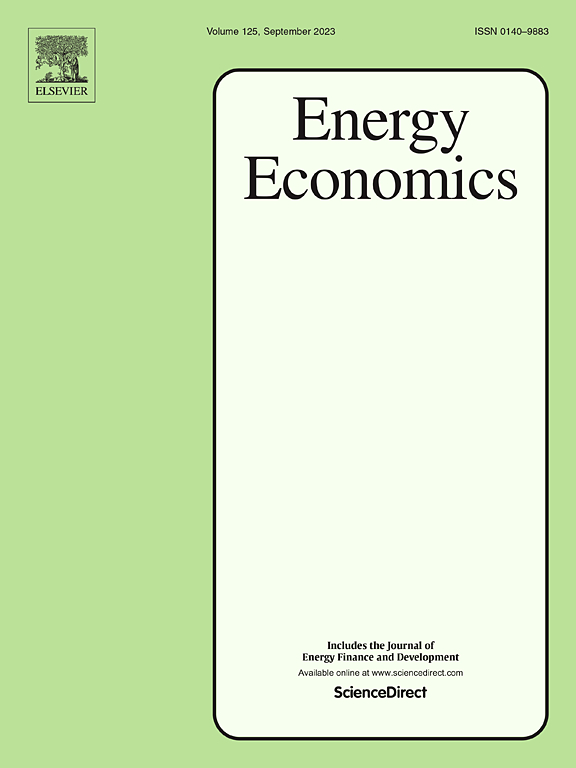面对高可变可再生能源渗透的中国电力系统风险规避转型路径
IF 14.2
2区 经济学
Q1 ECONOMICS
引用次数: 0
摘要
可变可再生能源(VRE)的高渗透率对电力系统的安全提出了重大挑战,因为它加剧了天气脆弱性。为了解决这些风险,必须部署多样化的灵活选择组合,这就需要采用多技术优化方法。本研究采用条件风险值(CVaR)方法,将风险规避纳入扩容并网模型。在无风险(RF)、风险中性(RN)和风险厌恶(RA)情景下,中国电力系统的最佳转型路径得到了发展。研究表明,尽管VRE普及率将在全国范围内继续上升,但随着区域装机容量接近其技术上限,阻力也会加剧,加剧了区域异质性,特别是在RA条件下。有效的电网支持和运行调度是控制源负荷不确定性的关键。在风险规避(事前成本)和风险损失(事后成本)之间进行战略权衡,以实现经济上最优的过渡。基于这些见解,我们建议优先评估与vre相关的风险,并在整个电力系统过渡过程中加强风险管理。本文章由计算机程序翻译,如有差异,请以英文原文为准。
Risk-averse transition pathway for China's power system facing high variable renewable energy penetration
The high penetration of variable renewable energy (VRE) poses significant challenges to power system security, due to exacerbated weather vulnerability. To address these risks, a diversified portfolio of flexible options must be deployed, necessitating a multi-technology optimization approach. This study integrates risk aversion into the capacity expansion and grid connection model using the Conditional Value-at-Risk (CVaR) method. Optimal transition pathways for China's power systems are developed under risk-free (RF), risk-neutral (RN) and risk-averse (RA) scenarios. It's revealed that while VRE penetration will continue to rise nationally, resistance intensifies as regional installed capacity approaches its technical ceiling, exacerbating regional heterogeneity, particularly under RA conditions. Effective grid support and operation dispatch are critical for managing source-load uncertainties. A strategic trade-off between risk aversion (ex-ante costs) and risk loss (ex-post costs) is made to achieve an economically optimal transition. Based on these insights, we suggest prioritizing the assessment of VRE-associated risks and strengthening risk management throughout the entire power system transition process.
求助全文
通过发布文献求助,成功后即可免费获取论文全文。
去求助
来源期刊

Energy Economics
ECONOMICS-
CiteScore
18.60
自引率
12.50%
发文量
524
期刊介绍:
Energy Economics is a field journal that focuses on energy economics and energy finance. It covers various themes including the exploitation, conversion, and use of energy, markets for energy commodities and derivatives, regulation and taxation, forecasting, environment and climate, international trade, development, and monetary policy. The journal welcomes contributions that utilize diverse methods such as experiments, surveys, econometrics, decomposition, simulation models, equilibrium models, optimization models, and analytical models. It publishes a combination of papers employing different methods to explore a wide range of topics. The journal's replication policy encourages the submission of replication studies, wherein researchers reproduce and extend the key results of original studies while explaining any differences. Energy Economics is indexed and abstracted in several databases including Environmental Abstracts, Fuel and Energy Abstracts, Social Sciences Citation Index, GEOBASE, Social & Behavioral Sciences, Journal of Economic Literature, INSPEC, and more.
 求助内容:
求助内容: 应助结果提醒方式:
应助结果提醒方式:


